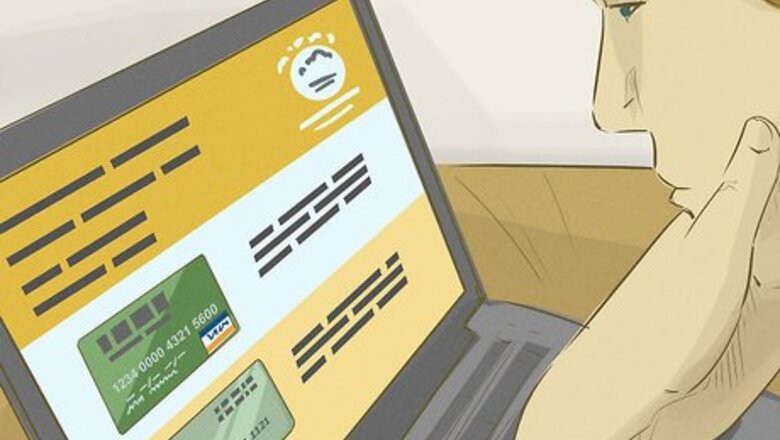
views
Applying Directly for Credit Cards

Research cards personally. You can also take the initiative and look for cards on your own. This will allow you to shop with companies like Capital One, Chase, Citibank, and Discover, compare perks and details, and inform yourself more widely. There are now online resources that bring together cards so you can review them and shop for the best option. These sites also let you select your preferences, whether a low APR, a travel points program, or cash back offer. Look for cards that target your credit situation or age. For example, you can search for cards that are good for students or seniors or even cards for certain professional organizations.

Be wary of retailer credit card offers. Some department stores and retailers offer consumer credit cards and will give you a sales pitch at the checkout counter. Sounds too easy? It may be. Consider the terms carefully before signing up. Store credit cards often carry high interest rates and give less perks than normal credit cards. They may also not be accepted as widely. A store card can work for you if used wisely, however. For instance, you can benefit from discount offers if you shop at the store regularly or make big-ticket purchases there. A store credit card or gas station credit card can also help to build up your credit if you make your payments on time. If you decide to get one of these cards, be sure to pay off charges immediately to avoid the higher interest rate.

Look for offers in your email or your mailbox. Credit card companies like to advertise, and you might be advised that you are “pre-screened” or “pre-approved” for credit. This means that the card company has reviewed your financial data and targeted you as an ideal applicant. Getting a pre-approved offer means that a credit card company has already looked at your credit score, borrowing history, and other details. The offer may also be customized for your age, income bracket, or personal interests. Pre-screened cards are almost always approved – but not necessarily with the APR and terms advertised in the mail-out. Some companies also advertise with “Invitations to Apply.” These offers are not pre-approved and are not firm offers of credit. You may be denied.
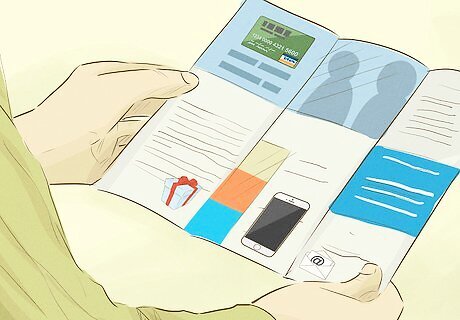
Review the offer. Make sure to look over the offer and all the terms. Unlike at a bank, you won’t be able to ask someone about these details in person. Read the offer carefully and especially for fees, interest rates, and minimum payments. Unfortunately, credit card scams are common. Be sure that you recognize the company. Don’t fall for promises that you’ll get a credit card if you have poor credit and never pay anything up front. Find a card that works for you. Look for rewards programs and perks that you can use, consider how widely retailers will accept the card, and read the fine print.
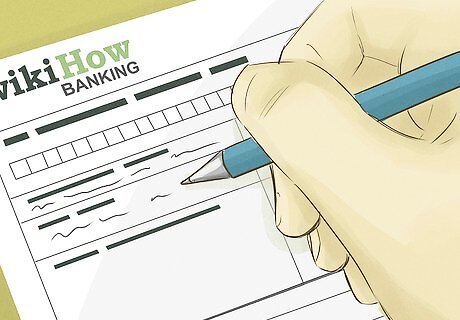
Fill out the application. Whether online, in-person, or by mail, make a formal application once you’ve decided on a card that works for you. Again, give correct details about you and your financial situation. Email offers will come with a link to the online application. You can also call the toll-free number or fill out the paper application if your offer came in the mail. Provide any offer codes when you apply for the card. Most letters or emails will have a code including letters and numbers to access the specific offer made to you.
Building Up Good Credit

Start early and build up a solid credit history. Having good credit is an important part of qualifying for credit cards. That’s not all, though. You may need good credit to get utilities connected to your home, to rent an apartment, to pass an employer credit check, or to secure car and home loans. Start early. Length of credit is a big factor in getting future credit and qualifying for cards. Lenders want to see that you have a track record in paying off your debts. Student or secured credit cards are good ways to establish and build your credit, as are retail and gas station credit cards. With good management, you can upgrade to a major credit card with lower interest rates and larger spending limits.
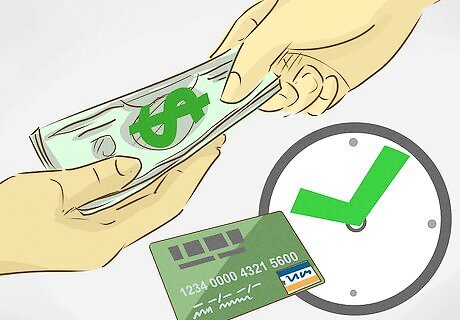
Pay off your balance or meet the monthly minimum. Payment history counts for about 35% of your credit score. Make sure that you at least pay off your monthly minimums on the card’s balance, or you may hurt your standing. Don’t miss outstanding payments, obviously. Card companies will charge you late penalties and, possibly, raise your interest rate if you pay late. Also, payments 30 or more days late can end up on your credit report. The best thing to do is to pay off balances early and in full, before the monthly deadline.
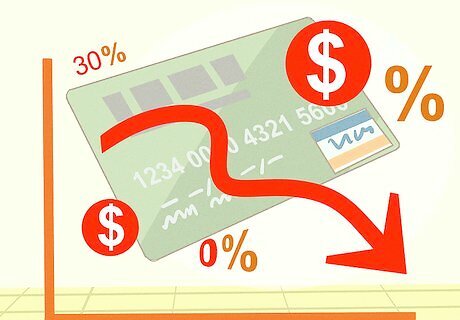
Keep your debt-utilization rate low. How much you pay or how often you pay per month does not figure into your credit score. The thing that really matters is your balance on each card, or what is called the “debt-utilization ratio.” Utilization counts for about 30% of your credit score. Having a large debt-utilization ratio (i.e. big balances on your card) sends a bad message to lenders. It suggests that you spend more than you can pay. Try to keep your ratio low. Most experts say that your debt-utilization ratio shouldn’t be more than 30% at the most. This means a $3000 balance on a $10000 credit line. A ratio of zero will greatly improve your credit score.
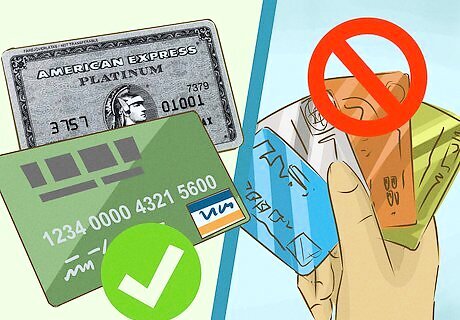
Limit your cards. Another factor in your credit score is the number of accounts you hold, not only credit lines but mortgages, student loans, car loans, and others. The ideal number of cards to keep is not so clear, however. Some experts recommend that you limit yourself to two personal credit cards, keeping one for normal purchases and the other for emergencies. More cards mean more temptation to spend and more risk of high debt. However, others argue that it’s possible to have many credit cards, so long as you always pay on time and use them wisely. Whichever path you choose, make sure not to apply for many credit cards at once. Every time you apply for a card, it initiates a “hard inquiry” on your credit report, which lowers your score. Too many hard inquiries in a short period will actually damage your credit.
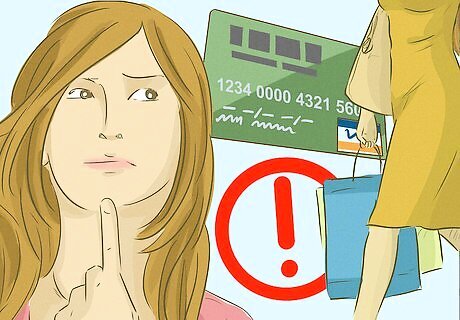
Use the card wisely. Finally, keep in mind that a credit card is not “free money” and that you will have to pay for purchases sooner or later. Use good financial sense and your credit score will be high, leading to future opportunities for cards and loans. Avoid the temptation that comes with a credit card. It’s OK to use it now and then, but don’t spend beyond your financial means. Pay off your balances on time, every time. This will more than anything will assure you of good credit and sound finances.
Talking to a Financial Institution

Inquire at a bank or credit union. Larger banks and even some credit unions offer their own credit cards to customers. Consider starting at one of these institutions. They will be able to give you sound advice and explain important details like fees, credit limits, and interest rates and help you choose the right card. Bank credit cards are usually reserved for established customers. You’ll need an account. Having a checking account at the bank can help, in particular. If you are a long-time customer, the bank may ask you first about a credit card. As banks seek to diversify, they are trying to build up credit card portfolios and entice customers with good introductory interest rates and extra rewards. Another benefit of having a bank credit card is that you may be able to link the card to your normal accounts, making payments easier to manage.

Make an appointment with a banker. Most banks offer several different cards. The best one for you will depend on your financial situation, spending habits, and credit score. Sit down with a banker. She will be able to discuss your options and advise you on the most fitting choice. Ask questions and listen for important details. You’ll want to be clear about each card’s profile. What is the yearly interest rate (APR)? Is there an annual fee for holding the card? How much is the credit line? What is the minimum payment you can make toward outstanding balances? Make sure to know if the card’s APR is “introductory” or “fixed.” Lenders will often offer a low introductory rate to attract customers, which will then go up after a period of months or years. Ask about rewards. Some credit cards will earn you air miles with each purchase. Some offer cash back or points that you can redeem for merchandise. Weigh what options you have. Non-profit financial institutions like credit unions often offer lower APRs and lower penalty rates on credit cards. You will probably have to be a member of the credit union to qualify, however.
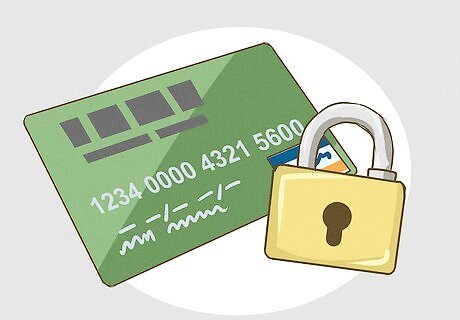
Consider a secure card. If you are new to credit, or if the bank cannot offer you a regular credit card, ask about getting a “secure credit card.” Secure cards are used to build up trust and a good credit history. They can help you get a foot in the door and eventually qualify for an unsecured account. Secure cards require collateral. This means that you will have to give the bank a deposit for your credit line ($500 for a $500 credit line, for example, or $1000 for a $1000 line). Secure cards work like normal credit cards. Your deposit won’t count toward payments, but is just there for security. Your bank will periodically review your account. If you pay on time, they may eventually offer you a normal credit card with a larger line of credit. Be aware that your bank keeps a close eye on secured card accounts. You’ll have to make all of your monthly payments, or the bank may be able to keep your deposit.
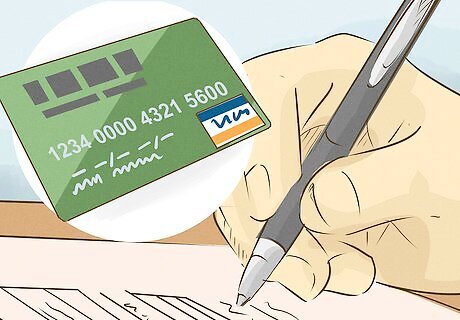
Apply for the card. After talking with a representative of your bank or credit union, you will be asked to fill out an application. Take this application seriously and answer all the questions honestly. Lying about your information is fraud and against the law. You will have to provide personal information, but also details on your citizenship, employment, and finances. Be prepared to answer questions about your annual income but also the monthly cost of your housing and how much you have in “liquid assets,” i.e. how much money you have in cash, savings or checking accounts, or certificates of deposit. Submit the application and wait for your bank’s decision. This may take a couple of weeks. If approved, they will usually send the card in the mail. You’ll have to activate the card before using it. Activation is easy and only takes a few minutes. Just follow the instructions that come with the new credit card.




















Comments
0 comment